Criticism of "Questions of Settler-Colonialism in the U.S."
The article in question: https://www.cpusa.org/article/questions-of-settler-colonialism-in-the-u-s/
This is a response to a CPUSA published article concerning the topic of Settler-Colonialism in the US. I quote the article at length so you cannot miss any points they have made. Wrote this right after reading, there's likely mistakes in here. Feel free to crit me and ask for sources and stuff. This is not a formal response, and I do not represent any org here, this is comradely crit for an article carrying theoretical mistakes. I'm criticizing from the angle of a New Afrikan. Emphasis is mine unless I reformat better and have to make the distinctions clear.
To let the piece open itself:
The question of settler-colonialism and its place in the web of contradictions in the U.S. have resurfaced, and of the Communist Party’s position, so it bears addressing. Without a concrete answer to these questions, our party’s ability to help build a mass movement and unite the working class will be weakened significantly.
The document provides its preferred definition of Settler-Colonialism:
Settler-colonialism is a form of colonialism that is different from regular, or franchise, colonialism. Rather than wanting to exploit the Indigenous population, like in franchise colonialism, settler-colonialism seeks to drive an indigenous population off their land by any means necessary and exploit it for the profit of the private owners of the means of production.
The piece posits that "regular" Colonialism intends to exploit the Indigenous population, while settler-Colonialism intends to expropriate and remove them. That both of these behaviors exist in all colonial structures is ignored. The settlers of Rhodesia not only violently occupied land used by Africans, they also exploited African labor by continuing to deny them access to resources except through wage labor or zero-wage labor, slavery. Whether exploitation or expropriation is used is actually an evolution in the relations between Indigene and the Occupation. Under English colonization, the Pequot people were first exploited for their productive capacities, then removed from their lands where a significant portion of them were sold into slavery to be exploited away from their land-relations. Smashing the Pequot came about because they stood in the way of settler control over regional trade, a condition that developed from relations where Pequot and English traded in mutually beneficial relations.
The United States was formed on a settler-colonial basis. What is a more disputed question, however, is whether settler-colonialism still exists. It should be clear that setter-colonialism still exists in this country, exemplified by Indigenous communities’ constant and ongoing struggle against it and for their rights and sovereignty. Indigenous communities have to fight for recognition of their treaties, defend from environmental degradation by illegal pipelines, medical and police malpractice and racism, theft of community resources with legal rights totally disregarded.
Indeed these are many ways Settler-Colonialism still exists, but these are each individual events and the article has not yet described the structure. Even within the definition of simply removal, the continued state of removed perpetuates the colonization. Indigenous people face hardships like disrespected treaties and police violence because they are continuously removed from their land-relations. They venture into bordertowns because they are deprived of sustenance. They are exploited if not destroyed because they were expropriated.
The trail of tears and the near extinction of the buffalo serve as examples of historical atrocities committed by settler-colonialism, though it should be stressed that settler-colonialism is not an “event” but actually a structure of oppression. Individual white settlers were incentivized to settle land based on price, entrepreneurship, and the competition with other sources of labor such as the influx of immigrants and slaves. We’re seeing the atrocities of settler-colonialism right now in Israel, with the settlements in the West Bank, the genocide in Gaza, the 76 years of occupation, and the constant violation of Palestinian rights within Israel itself as well as apartheid. Settlers without a direct connection to the state will steal homes, block aid trucks going into Gaza, or produce fabricated stories and videos for news and social media to justify the atrocities. If this represents contemporary settler-colonialism in Israel, how then does it appear in the U.S.?
The article attempts to address the structure, and here acknowledges that settlers are incentivized (by labor conditions internal to the occupation) to settle new lands. Sure, but this is not a full picture. In locations where the settlements are already established, where land has been deprived from Indigenous people and settled, why then, would the standing army of the United States be [vanguarding the extermination of buffalo]? (hint, it might have to do with the resistance) Do settler interests fundamentally define the nature and behavior of the US state? Is the settler civil-society a component of statehood? Why does the IDF shoot to kill Palestinians who dare to fight back against the Israeli squatters? Why do these squatters burn fig orchards and pour concrete into wells? These settling interests must be intertwined with statehood on a deep level. These questions can be answered with another, why is Gaza bombed when these "settlement events" are taking place in distant regions of Palestine? The answer is resistance, Settler-Colonialism is a structure because its basis is perpetually questioned by resistance. If we look to the definition by Wolfe:
In short, elimination refers to more than the summary liquidation of Indigenous people, though it includes that. In its positive aspect, the logic of elimination marks a return whereby the native repressed continues to structure settler-colonial society. It is both as complex social formation and as continuity through time that I term settler colonization a structure rather than an event, and it is on this basis that I shall consider its relationship to genocide.
The IDF defends people filling wells in arid regions (that they themselves could be using!) because Palestinians resist and pose a threat to any settler. The US military sponsored ecocide, and maintains a heavily armed population because Indigenous resistance remains, there is something to competing in land-relations to the US, perpetually altering the structure of US society.
The article continues:
It must be stressed that settler-colonialism laid the basis for the further development of capitalism as a mode of primitive accumulation, and settler-colonialism only came into existence due to the development of capitalism and the pursuit of profit. Capitalism drove the process of settler-colonialism. However, as Lenin noted, American capitalism developed at a rate never seen before and ultimately, as settler-colonialism “closed the frontier” and Indigenous people were driven onto reservations and more of their land became occupied, settler-colonialism as a system began to shrink.(1) The amount of land-relations to be destroyed and exploited became increasingly small.(2) As monopoly capitalism developed within the U.S., settler-colonialism evolved within the context of this development. The enforcement of colonial law no longer was done by individual settlers, but by the capitalist class.(3) It became primarily driven not by the homesteader and the pioneer, the petty landowners of the 18th and 19th centuries, but the big landowners of agricultural and industrial capital.(4) Especially when putting into consideration the rapid industrialization of the country, the proletarianization of most of the population, and the shrinkage of the petty-bourgeoisie.(5)
The first part of this segment tries to answer the chicken-egg of Colonialism and Capitalism by putting one before the other, when only in certain situations is that apparent, and broadly, these are co-constitutive processes. Then let's address the next five points:
- Incorrectly posits that the class of settlers is distinctly those who have taken land. Says nothing about their relationship as continued occupiers, and says nothing about their relation to the broader network of property relations that is the Settler-Colonial Capitalist system. These frontier-persons are simply one way in which the Occupation came to control resources. The more common manner towards the "end of the frontier" (an event that was claimed by said entity, not found in reality) was sending the standing army, men such as the so-called "Buffalo Soldiers" or George "Hang Them All" Wright and his Military Division of the Pacific. In fact, nearly all of those who were profiting off of settler expansion were members of the colonial militias and later US standing army.
- Land-relations here is seemingly referring to Indigenous individuals, by claiming the amount of land-relations and stolen labor had been decreasing. In the sense that there were less land to steal, because more and more land had been stolen, this somewhat makes sense. However, is it reasonable to define the structure of theft by how much left there is to steal, and ignoring the mountain of already stolen things? This is the problem with limiting definitions of Set-Col to land-theft and murder, because in this frame we can only describe individual events of stealing, failing to describe the structure.
- All settler classes have relations as a civil-society to colonial law. Rarely has any capitalist themselves personally been the executor of state law. This point doesn't make sense. All settlers are in different contexts, executing Settler-Colonial law.
- How did big landowners come into existence? Buying land from small landowners if they did not take it themselves. Accumulation of this property is a relation internal to the Settler Colony. The total wealth of the colony did not change unless resistance was able to remove that property from the settler occupation's grasp.
- The petty-bourgeoisie has never shrunk. Land-ownership rates are at an all time high in the 2nd half of the 20th century and this first part of the 21st century. In fact, the PB has grown if we are including definitions of Labor Aristocracy (workers who are paid more than the global value of labor). In the 2010 the 210M landowners (representing the bottom 80% of the population) and business owners in the US owned more wealth than all publicly traded companies in the world combined. Such fantasies of a "disappearing middle-class" is just one revisionism Settlerism brings to the movement.
This became evident by big companies taking over the role in exploiting Indigenous lands rather than individual settlers with the permission and helping of the capitalist state. There are many judicial cases concerning oil and land rights that could be looked at. Roxanne Dunbar-Ortiz writes about this in her book An Indigenous People’s History of the United States.
US civil-society no longer exists on Indigenous lands, because Capitalism developed?
By the 20th century, settler-colonialism had done its dirty work by almost wiping out the Indigenous population, from a population of over 60 million before Columbus’ voyage in 1492 to 237,196 in 1900. The struggle against settler-colonialism and capitalism became increasingly intertwined, more so than ever before.
It's extremely disingenuous to compare the estimated (by Ortiz) total population of the Americas in 1492 to the population of Indigenous people in the US in 1900. The founding of the US in 1776 is closer to us now in time than it was to Columbus's landing. The total native American population in 1900 was some 4-5M people, it is now up to some 45M people. In the US alone it went from some 240k to some 7 million people today. It's estimated that over 100k Indigenous people in the US (claimed territory) died from 1860 to 1900 due to colonial policies such as boarding schools (40k children dead or missing from th start of the schools to today). Settler-Colonialism was not just the theft that causes death, but the continued exclusion that prevents populations from recovering to pre-disaster levels. This continued exclusion raised the white/settler population of the US by hundreds of millions over this period.
This leads into the most controversial question, who constitutes a settler in the United States today? Are all white workers settlers like some believe? We first have to understand what it means to be Indigenous, and what it means to be a settler. As these two social relations are linked to each other through the dynamics of settler-colonialism. Nick Estes, a citizen of the Lower Brule Sioux Tribe, said in Our History is the Future regarding the history of our people:
“Next to the maintenance of good relations within the nation, an individual’s second duty was the protection of communal territory. In the east, the vast wild rice patties and seasonal farms that grew corn, beans, and squash demarcated Dakota territory. In the west, Lakota territory extended as far as the buffalo herds that traveled in the fertile Powder River country. For Dakotas, Lakotas, and Nakotas, territory was defined as any place where they cultivated relations with plant and animal life; this often overlaid, and was sometimes in conflict, with other Indigenous nations.”
With this, we can conclude that Indigeneity is a social relation defined by the persistence of long-standing communal links and Indigenous identities in a specific place. The relationship to a specific homeland or territory is important, but the loss of direct ties to land does not rule out Indigeneity. Rather, the continuity of belonging to a particular mode of life and community is essential.
Here is a conflation of the definition of nationhood as organized by the Oceti Sakowin, with a definition of Indigeneity. The quote is almost irrelevant to the conclusion drawn. Where the conclusion fails is the insistence that a "particular mode of life and community is essential" (which works better for nations, but not Indigeneity). This insistence posits that Indigeneity ends when a particular mode of living ends, say, if every time you go to collect your three-sisters, a settler shoots you. Rather, it's the continued threat of being shot by an occupier (or other forms of exclusion) that makes one's interrelations (nation, community, tribe, lands) Indigenous. It also insists that if a Dakota person starts growing Eurasian wheat or African rye, a practice learned from outside their internal national relations, they cease being Indigenous. What if the nations starts using Dutch firearms, or start to grind their corn with water-mills? Such definitions posit that Indigenous nations are only Indigenous if they are frozen in time, which is convenient towards events-thinking rather than systems-thinking. A structural relationship, like that between an oppressed people and an oppressor people, where both are subject to internal and external relational evolution, escapes the definitions pushed by the article.
A settler is a one who is outside these land-relations, and plays an active role in negating them. This does not mean that one has to personally enforce colonial laws, rather it means that they directly benefit from the participation in the destruction of these land relations. There are many factors to being a settler. An important factor of being a settler, though this is not the sole characteristic, is being a socio-political citizen of a settler-colonial society. This means that “in law and in social practice, one has the full rights of belonging to the settler-colonial nation, and is recognized as such in ideology.”
Nowhere did the article define what a settler-colonial society is, we have to assume from what came before that they mean the interrelations internal to the occupation. They are defining a nation of settlers. So then, how does one fall outside of this nation, by not benefitting directly, apparently. However, the food one eats, the place one sleeps, all of this property was accumulated by the settler occupation, how are these not direct relationships to the total relationship between settler-colonial society and Indigenous societies? One must think Proletarians as a class did not benefit from the expropriations of peasant-lord relations, even if they were once peasants themselves. Directness is never defined.
The question arises: what does it mean to be a socio-political citizen in the US? What does that entail and what defines it? If we go based solely on race lines, arguing that being white is what makes one a socio-political citizen and therefore all white people are settlers, then we have to ask: what about the Black bourgeoisie? We could go based solely on class lines to define this, but that also carries contradictions. What about those who objectively enforce colonial laws but aren’t bourgeois? Like the police or the army? All these factors have varying weights, but none are the sole nor main characteristic of being a settler as they’re all important and interact with each other.
Contradictions make the system living. There are classes of Indigenous and "arrivant" populations that can benefit from the motions of settler-colonial development. These are contradictions we well understand when we are talking about "regular" Colonialism and Neo-Colonialism, yet for some reason we have to revise such notions when speaking of Settler-Colonialism. The development of one's class can contradict the development of their nation. Though it is not wise to limit such notions to "race", which is a product of national antagonisms and not the source. Former slaves working to subjugate other Indigenous peoples including their own kin is one of many really existing contradictions that give Settler-Colonialism and Capitalism life.
Being a settler depends on actively exploiting a dominant population in active use of the land, expropriating their agriculture, and laboring them upon their soil. Even with the force of its armies, the capitalist class could not have completed the task of violence on its own since there was simply too much to be done. In that sense, being a settler played a unique role. As we witnessed later in Klan deputies and today’s armed West Bank settlers, it was an early manifestation of a fascist paramilitary that was de facto supported by the state. It has evolved in the current context of the development of monopoly capitalism in the US.
The existence of an army, and of settlers (a form of army), is a definite sign that the Capitalist class cannot meet all ends by their own means. Class collaboration is always necessary for Imperialism, whether a joint venture from the start or by engaging in relations with expropriated property afterwards. At that point the Imperialism is validated. Any class of settler is capable of starting an Imperial venture (and they have), but all classes need to validate it eventually (there is room for struggle here). The average settler-worker does not put much effort into upholding settlerism, because their interests as a class are efficiently organized in the settler-state.
The capitalist class are very much settlers, as they directly profit from the destruction of Indigenous land relations and the violation of their sovereignty and drive settler-colonialism in the US. Those who are part of arms of the state, such as the army or police, are settlers as they are involved and work within a system which personally enforces colonial laws, and soldiers and officers harass tribal members daily and incarceration rates for Native American people are 4 times higher than the rate of white people. Native Women are particularly targeted. We also see those workers who work under companies who exploit Indigenous lands and engage directly in the destruction of these land-relations as settlers, as these workers directly benefit from it and participate in the destruction of these land-relations. We should also include those who gain residencies or employment at the expense of Indigenous land-relations, as well as those in bordertowns and engaged in bordertown violence. Bordertowns, as defined by The Red Nation in their book The Red Deal, are:
“…settlement[s] sitting outside of a Native reservation. Some examples include Gallup, New Mexico, Santa Fe, New Mexico, Winslow, Arizona, and Rapid City, South Dakota. Bordertowns emerged from the dispossession, relocation and ethnic cleansing of Indigenous people. The function of a bordertown is to exploit the identity, labor, and death of Indigenous people.”
Most of this segment of the article is correct, however, reduced. For fear of contradiction (that give life), they'd like to argue that Indigenous people with government jobs are settlers. They are however, not settlers, even though they are in class relations antagonistic to decolonization and ultimately to the liberation of their nations. This contradiction exists because of the under-development of their nations due to Settler-Colonialism. The US government onboarding more and more Indigenous people is also a contradiction for itself, as writers like Red Nation have access to means of production to facilitate revolutionary study and spread it amongst the population. So too, did Fanon have the bourgeois education and employment, partially colonizing his own continent, but contradictorily gaining skills that eventually helped his people overthrow their colonizers. The last segment, defining Bordertowns, misses an extended manifesto by Red Nation that defines:
All land is Native, and all settler towns and cities are bordertowns. There is no "rural" or "urban," no "rez" or "city"; there is only the bordertown. The border exists everywhere settler order confronts Native order. Everything in a settler world is a border. Our persistent survival is the primary contradiction and the unresolvable crisis of settler colonialism. Settlers enforce the logic of bordertowns to overcome this contradiction. This is their primary job and the essence of their existence as settlers. They are born vigilantes in the making, taught to fear Native people and to see Native society as a threat. These are the conditions that give life to the violence of settler society. The Indian must be eliminated for no other reason than that we represent an alternative political order, one that precedes settler society and that holds within it the destruction of settler reality.
All settlements within US claims are Bordertowns. All USians who are not Indigenous are settlers. Other Colonialisms, such as slavery and apartheid, are sometimes sources for a third, "Arrivant", population in the dynamic, but what is actually going on is the vacillation of this segment of classes between decolonization and colonization. This contradiction surfaces in reality such as when the Buffalo Soldiers, former slaves, were fighting Indigenous peoples on behalf of the Texan regime in the Texan "frontier", which was simultaneously practicing settler colonialism against Freed communities in East Texas.
Most white workers do not see the benefits of settler-colonialism because it is no longer dominant or ubiquitous as it once was. Land relations have continuously been destroyed, confined to the land within reservations. Due to the dominance of capitalism, and the finiteness of these land relations in modern day, most white workers do not see the direct benefits of settler-colonialism and neither do they participate in the destruction of these relations.(1) White workers, of course, do benefit from the ideological superstructure of white supremacy which has maintained itself in a systemic form, defined by the dominance of capitalism However, while white supremacy is a tool used to oppress Native Americans, it is different from settler-colonialism, though both are connected.(2) Ultimately the working class has a material interest in ending capitalism and any system of oppression as it divides the working class and makes their collective power weaker.(3)
A 3-point response:
- Land-relations are not confined to reservations whatsoever. If that were the case, the Bolt-Decision would not even exist. As well, continued land-relations exist for all Indigenous communities, threat from the settler-society for performing such relations is ongoing. The NoDAPL protest would not have occurred because it does not cross existing reservation lines. Yet, the Oceti Sakowin rallied by the thousands to protect the water. This is a very confused point, which again relies on events-thinking to comprehend. White workers (in fact, all USians) in this one example, would continue to benefit by having more control over the global value of the dollar with access to fuel provided by DAPL. This is again contradictory for even the Lakota people on the Standing Rock Reservation. This leads to the broader contradiction, that US Imperialism relies on the continued subjugation of Indigenous national interests to provide high wages and excessive consumption to the vast majority of US workers. But again, using the corrected definitions, the idea that Indigenous land-relations are marginal and "vanishing" ignores facts like the US nuclear capable submarine base lying directly in a former Pequot village (whose refugees are in a nearby reservation). Also, notice that Gaza's fighters are predominantly refugees, which "descendent" is one of the ways Palestinian refugees are defined by the UN.
- White-supremacy is an ideology, developed in to handle two simultaneous colonialisms, chattel-slavery and Settlerism, referring to Red Nation's work again:
The language of disparities depicts the logic of elimination at the heart of settler colonialism as a kind of historical or political accident or aberration that should be confronted not through decolonization struggles over land but, rather, through political reforms to existing systems and institutions. The "white supremacy as aberration" logic seeks to blunt Native resistance to the settler state. Liberalism, in other words, is offered as the solution to white supremacy. Among the solutions liberalism offers are assimilation and state recognition, which is to say that the solution to white supremacy is found in the expansion of the settler state, which is based on and can't exist beyond white supremacy. White supremacy, however, is better understood as an organizing logic of settler and slave society-a logic that gives meaning and momentum to settler colonial violence.
White supremacy is not an aberration of the liberal capitalist state; it is its mirror image. After all, settler colonialism destroys to replace. The "disparities" that appear to describe white supremacy are not aberrations at all but, rather, reflect settler colonialism's unfinished and ongoing goal of the total dissolution of Native society. The "solutions" the liberal capitalist state offers to white supremacy are the smallpox-infected blankets of ongoing settler colonialism.
- Sure, but this is also reductive, because it ignores contradictions! The same questions as to why the German working class ended up on the side of Nazism is the same question why Israelis and Americans have yet to throw away their states and Bourgeois classes. What is missing from this, is a study of these contradictions and a strategy to parse friend from foe, change the conditions, and then again pick friend from foe! Missing from most of CPUSAs work on the subject is the realm of strategy. Questions such as how do we fracture the elements of the working class upholding Imperialism from the elements of the class seeking to destroy it? Some workers right now are enemies, but we can remove the conditions that reproduce enemies amongst that class through struggle. Trying to pick the biggest majority of allies is the stench of Trotskyism clouding the movement's vision. CPUSA tells us we are dividing the movement, but they have never gathered more than a few thousands "revolutionaries" at any given time, never bigger than what showed up to NoDAPL. Contradictions within the movement is what makes it weak. We must struggle through the most coherent relationships to change the base of society, to create more allies.
If white workers aren’t settlers, what are they? Some analysts of settler-colonialism use a third term, arrivants. Coined by Kamau Brathwaite and elaborated on by Jodi Byrd, the term is used to “signify those people forced into the Americas through the violence of European and Anglo-American colonialism and imperialism around the globe.” This is still, however, unsatisfactory because it still produces a non-answer when non-Native folks of white descent don’t actively exploit Native lands or play an active role in the negation of Indigenous land-relations as part of their social relation.
All social relations, as Marx outlines in the German Ideology, depend upon one’s relations to the means of production. White people are only exposed to the ideology in the predominate quality and quantity determined by the material conditions to which they are subjected. Therefore, an individual’s “choice” regarding how they relate to the means of production is determined by their level of consciousness. This decision is a privilege. Regardless, this only indicates that, at best, their privileged opportunities expose them to a higher degree of bourgeois class entry (more often than not, this embodies them into the petty bourgeois in an attempt to attain that higher level). This still remains the basic concept of false consciousness that Engels categorized, even if there is a crumb of truth in factors of luck.
Already addressed above, white workers are settlers (they also aren't the only settlers that are also workers), Arrivants are a vacillating set of classes dependent on the motions of the Indigenous-Settler relation. We are only confused here because we are afraid to have contradictions within our (attempted) Marxist definitions. The continued deprivation of the Indigenous land-relation is a definite part of the settler and arrivant state of being. Attempting to offload Settlerism onto property ownership fails to acknowledge that one's whole nation can rise on the backs of others, i.e. Imperialism and Labor Aristocracy, or even simply settler-workers.
There were settlers who oftentimes were promised their own land and homes in order to escape being poor. That’s what the ideological basis of settlerism was alongside the invention of racism, it has simply changed form today. Today, in an attempt to escape “the rat race,” white people can struggle with their other oppressed workers or adopt a false white supremacist consciousness, but they will always be workers until their class relations change.
Settlerism is not an ideology, and ideologies that advance Settlerism were developed after settlement was underway. Settlerism is a form of Imperialism.
We can tweak the definition of arrivant to be something more broad to fit this analysis, such as those who are part of social structures which dissolve those land-relations, but lack the citizenship and agency of settlers, or we can coin a new term to define those who do not fit into any of the existing three categories such as descendant. A descendant is one who is a descendant of any of the other three categories, whether that be indigenous, settler, or arrivant, but do not fit into either of these three categories. This new term would take the definition of the former suggestion. That being, those who are part of social structures which dissolve those land-relations, but lack the citizenship and agency of settlers. However, this is not conclusive.
Re: Palestinian refugees example.
The rest of the article:
Therefore, I call on the party to continue discussing this issue to develop these theories through the process of democratic centralism, and applying theory to practice. I also call on the party to focus its sights on the development of an Indigenous Commission which would work on developing theories relating to settler-colonialism and indigenous liberation, as well as focusing on the work of indigenous struggles.
We should recognize that these categories are not static. They can change and have done so. For example, there are historic examples of arrivants becoming settlers due to their participation in the destruction of indigenous land-relations. Like the Black buffalo soldiers who fought on the side of Manifest Destiny. All of this ultimately leads us to the conclusion that to end settler-colonialism in the United States, realize self-determination for the Indigenous nations, and decolonize the U.S., capitalism itself must also be ended. Socialism cannot be realized without decolonization, without addressing the settler-colonial question. We must tear down the prison house of Indigenous nations. Landback and the restoration of Indigenous sovereignty is only the start of it, rather than the end. It is a part of the minimum program. As Joe Sims said in his Main Report to the 32nd National Convention:
“And we know that a huge debt still has to be repaid to the victims of the genocide and slavery. And that repayment must include upholding Native peoples’ demand for Land Back, restoration of sovereignty and compensation for its violations, upholding treaty rights, harm reduction, and shared responsibility. I mean at a minimum. And that’s a beginning, not the end.”
The one thing of importance to pick out here is the question of Buffalo Soldiers becoming settlers. I agree, that a segment of the Freed-Black (New Afrikan) nation joined in on Settler-Colonialism. The New Afrikan nation should have, and should, consider the Buffalo Soldiers internal enemies, subject to eradication. Ideologies that celebrate them should be rooted out and destroyed. Such is the power of nationhood, regulated kinship, and the internal struggle amongst classes in an oppressed nation. Same goes for the "Black Bourgeoisie" or any other classes we discover through practice, are too unreliable to be helpful. That being said, the "Black Bourgeoisie" can be brought closer or pushed away from New Afrikan Liberation in different contexts, we should at all times move like water and use the strongest contradictions to turn any situation in favor of Communist revolution.



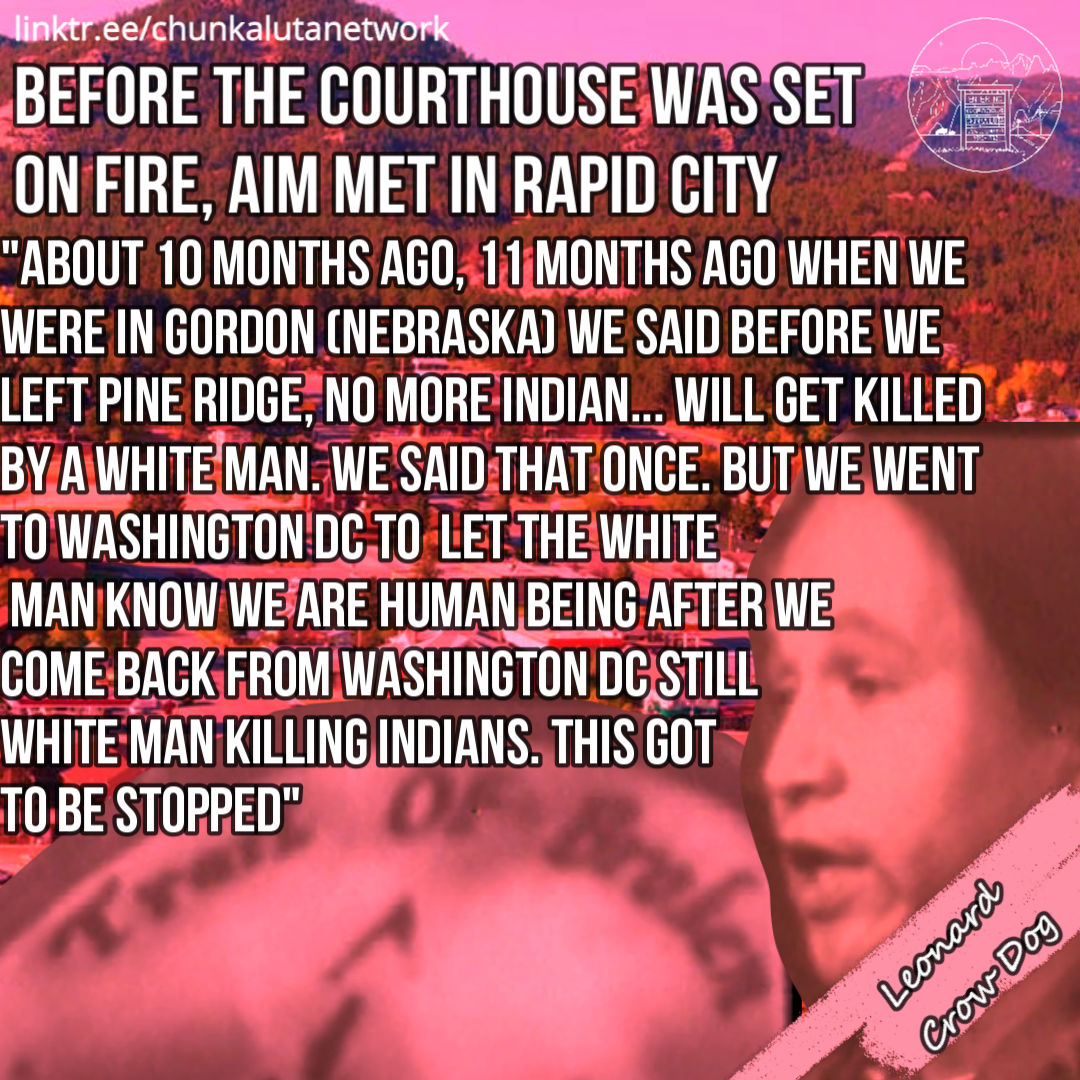
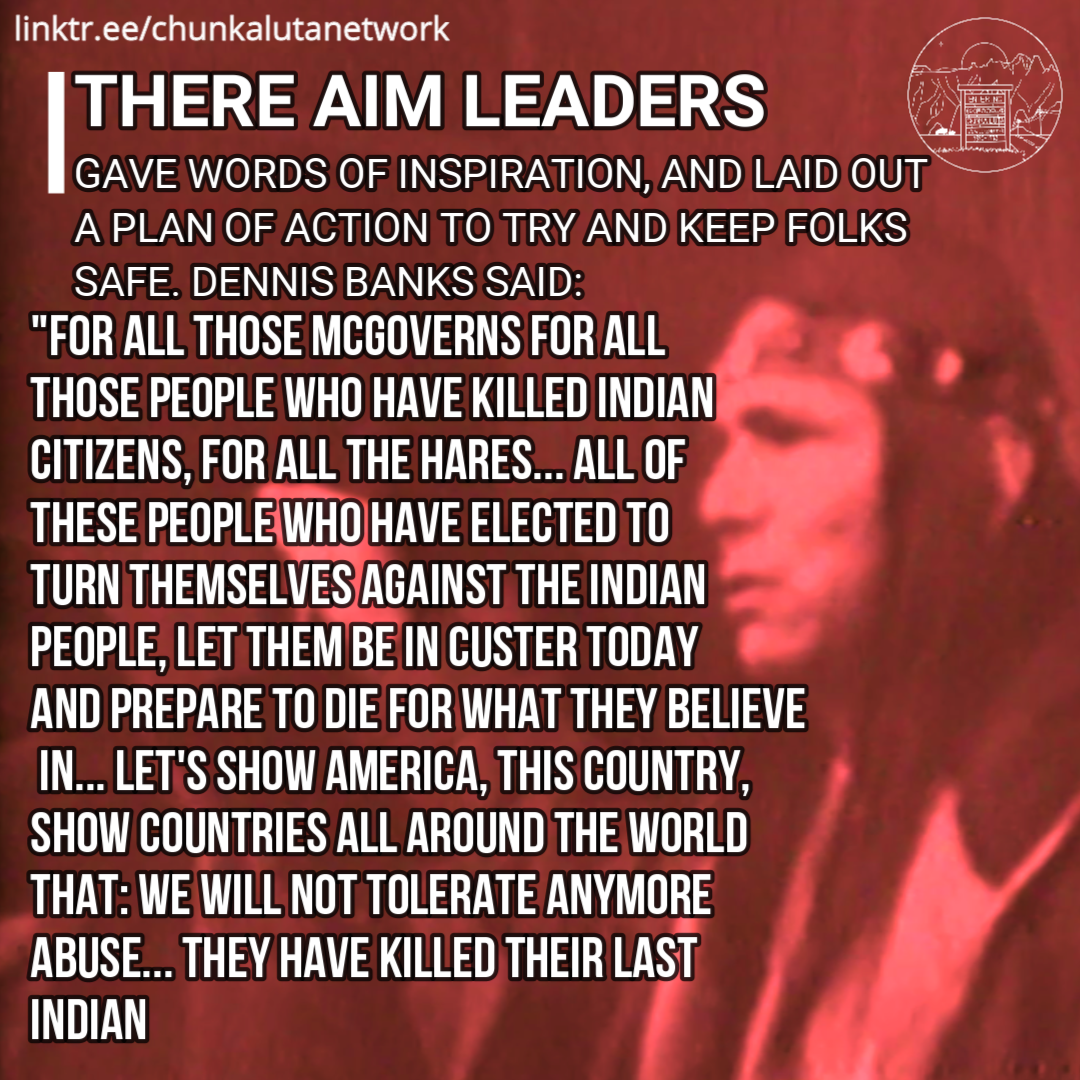
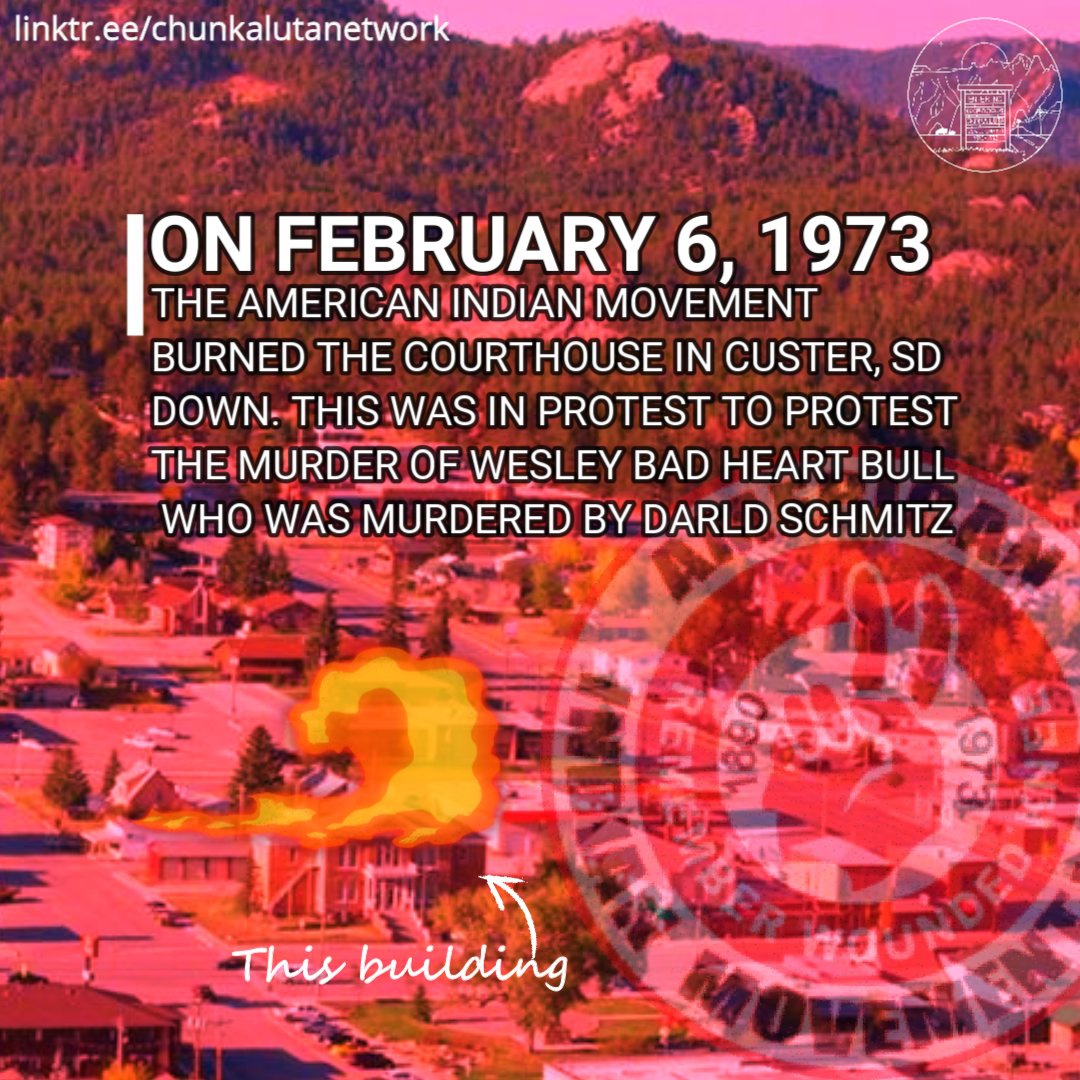
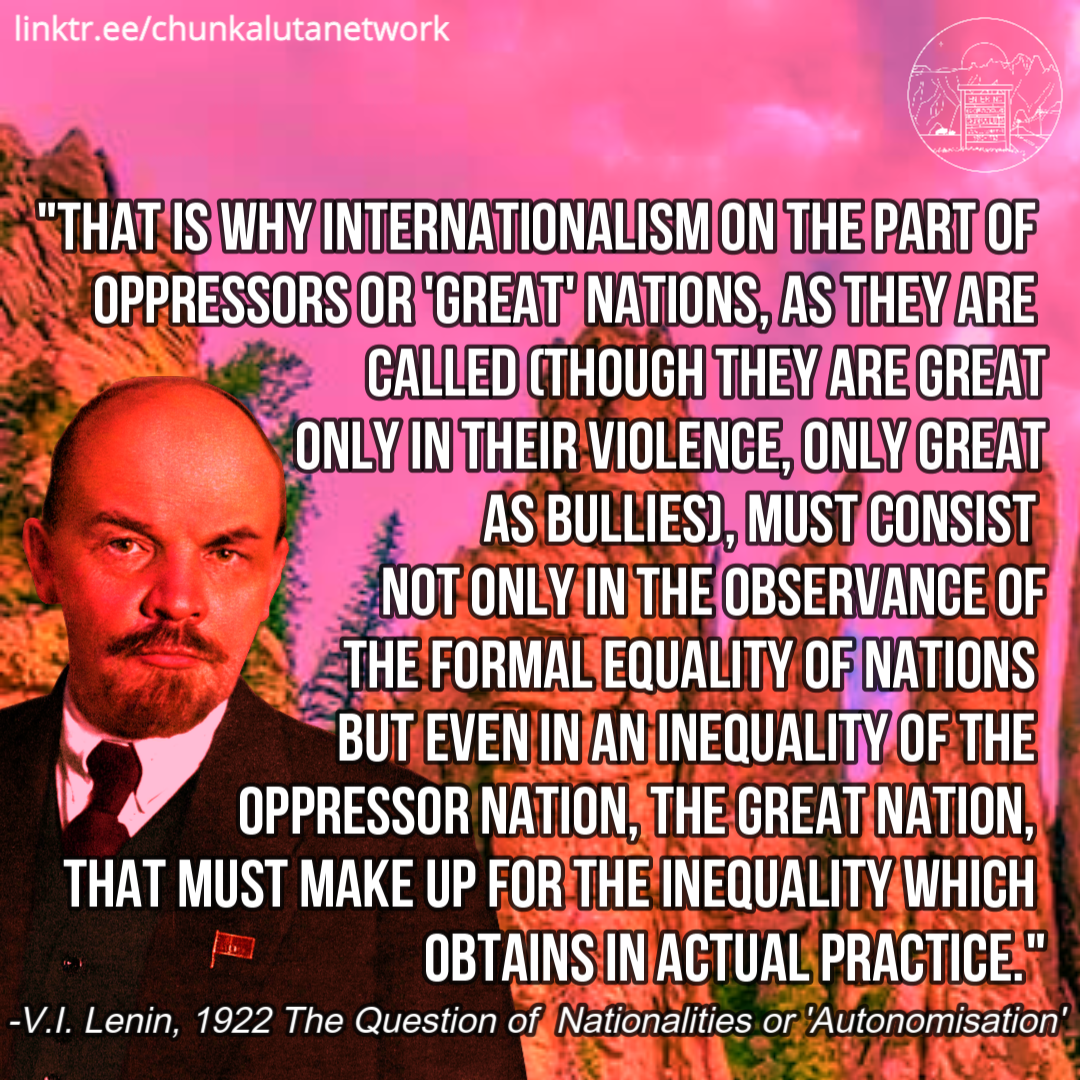
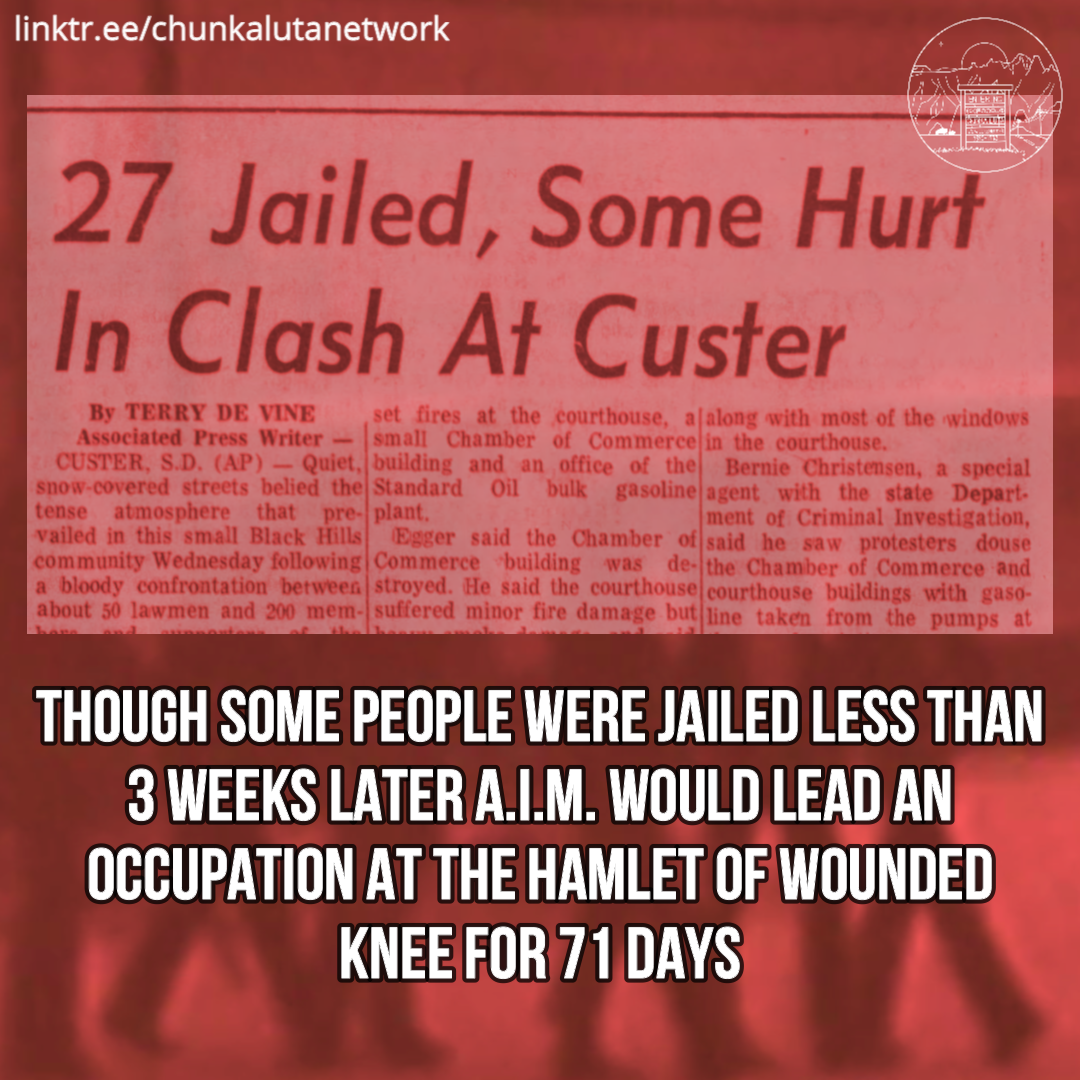
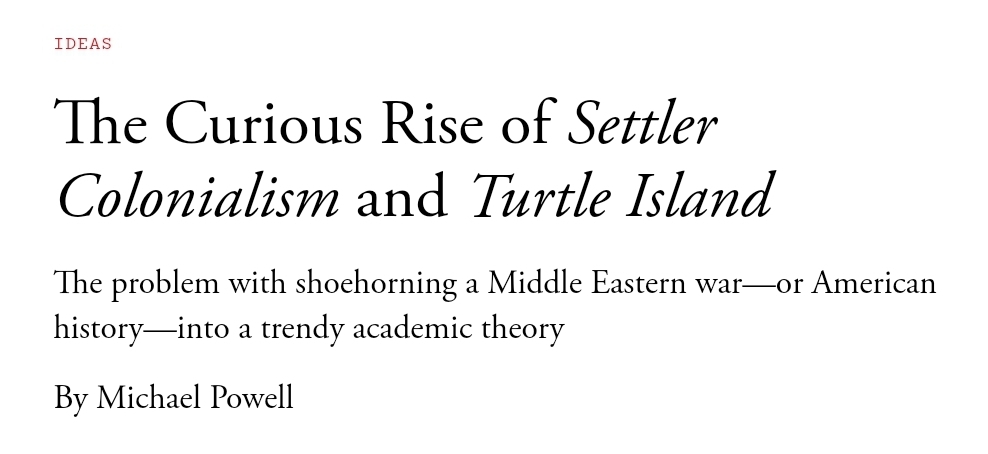
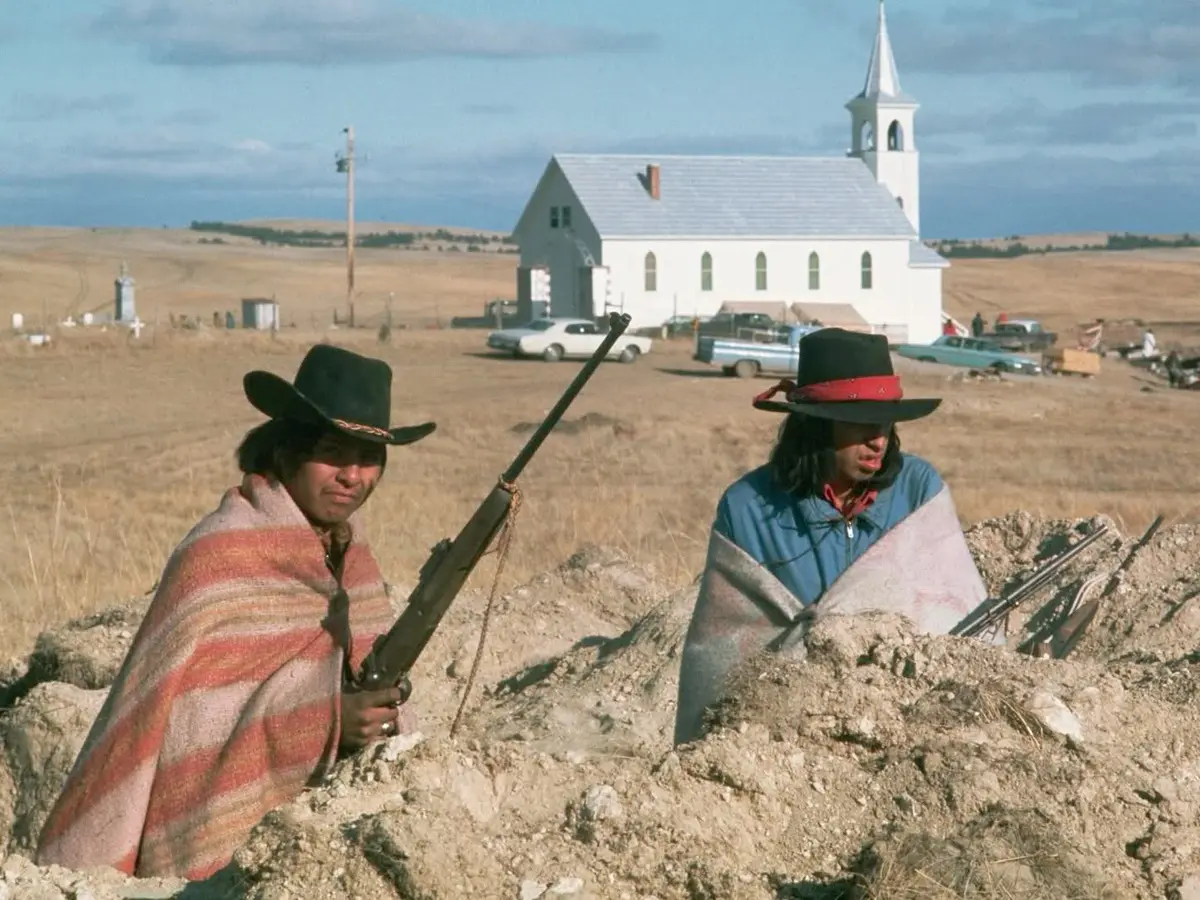

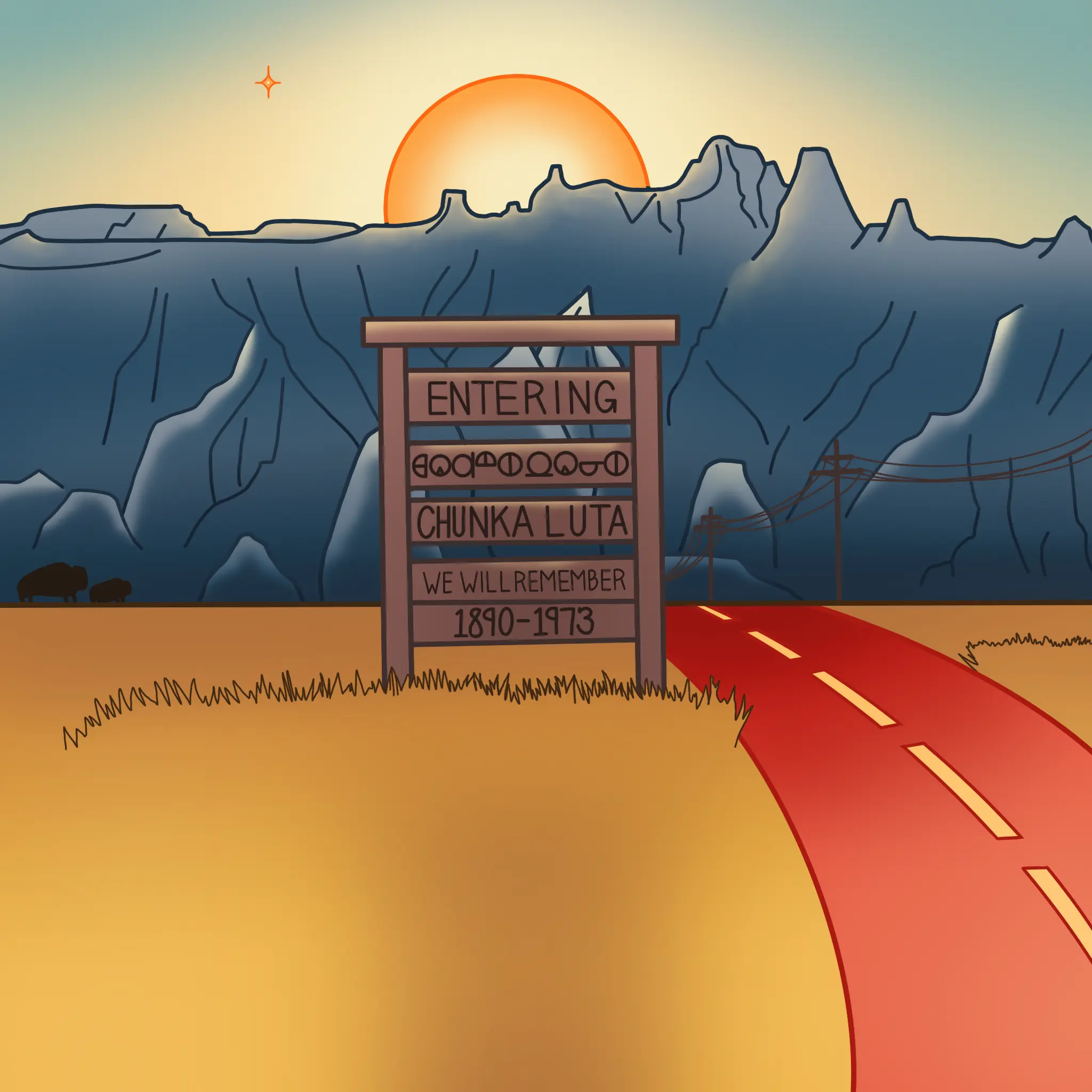
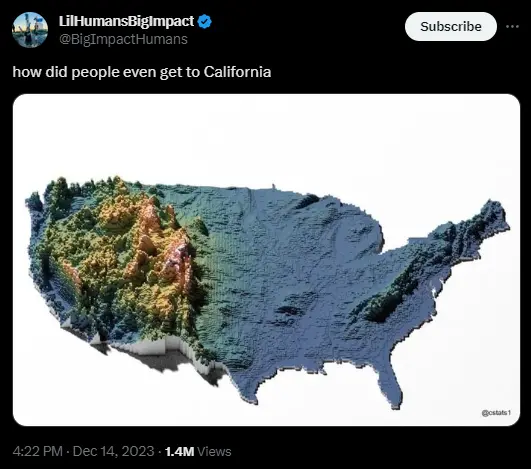

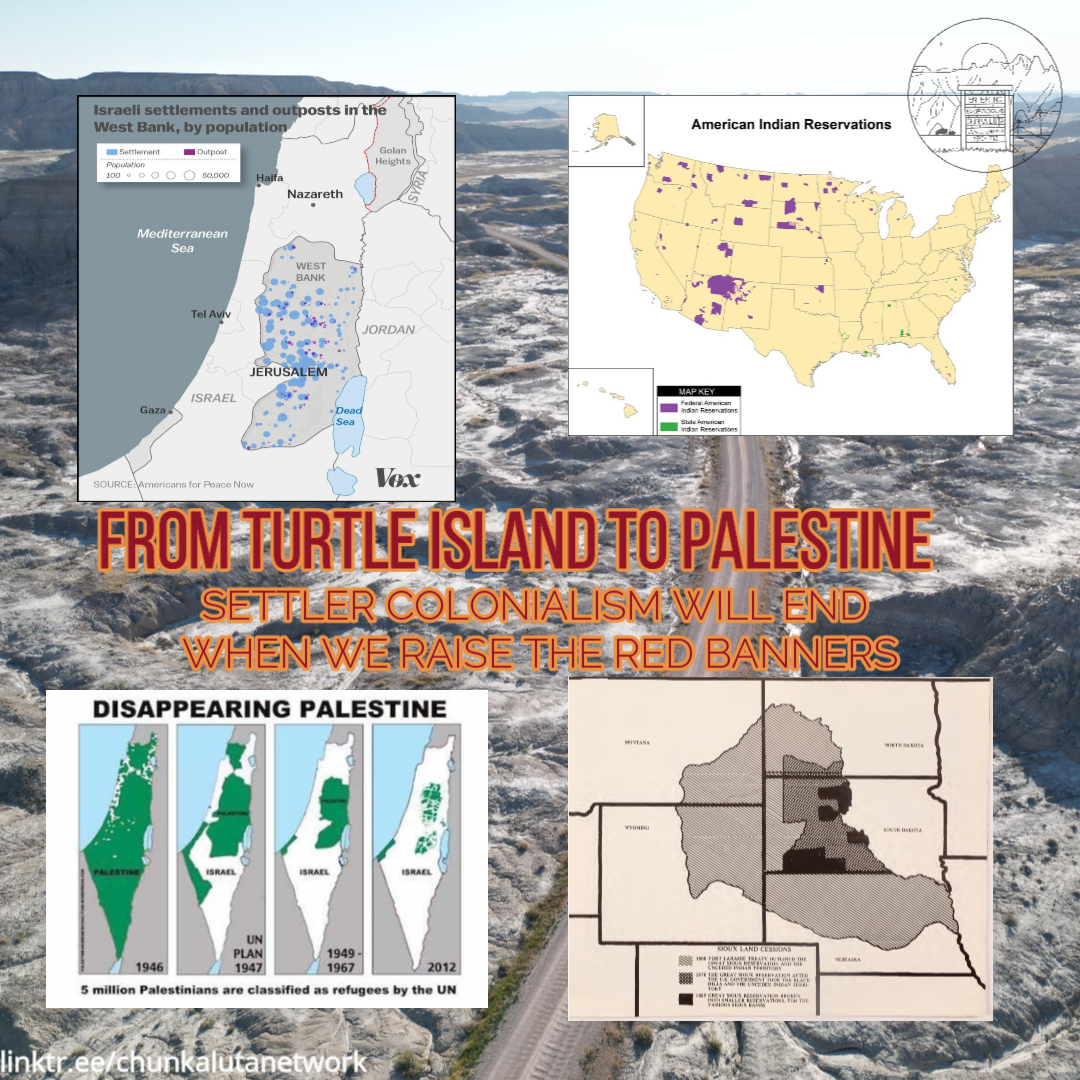
I'm assuming CPUSA authors must be using some abridged version whether they made it or found in material related to the Red Nation.